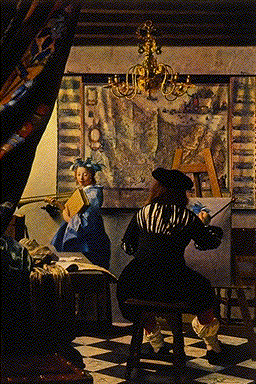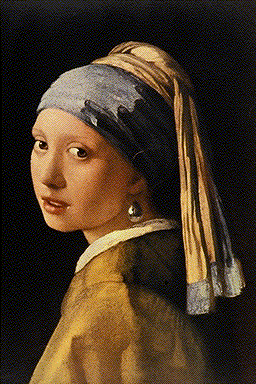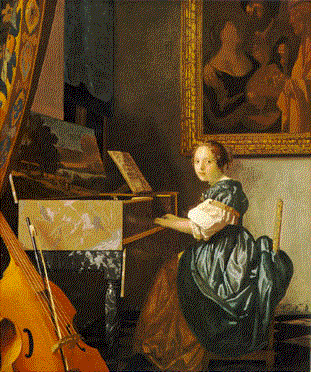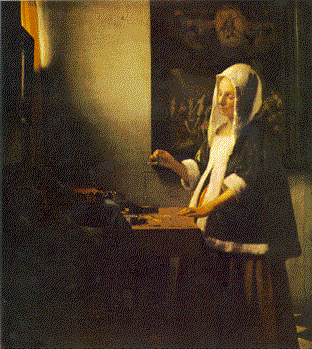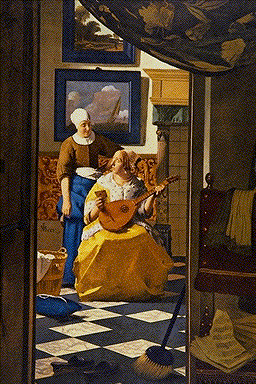
| THE LOVE LETTER Rijksmuseum, Amsterdam |
|---|
| Vermeer loved to grasp the private moment. Here a woman is presented a love note by her maid. She glances up with a look of apprehension and the maid reassuringly gazes back down upon her. The woman has obviously been consoling herself with her instrument (remember Achilles) and with the picture in the background, Vermeer hints that her love is at sea. He has added to the sense of our intrusion by placing the viewer in a closet (the curtain briefly drawn back) to view this most confidential moment. |
